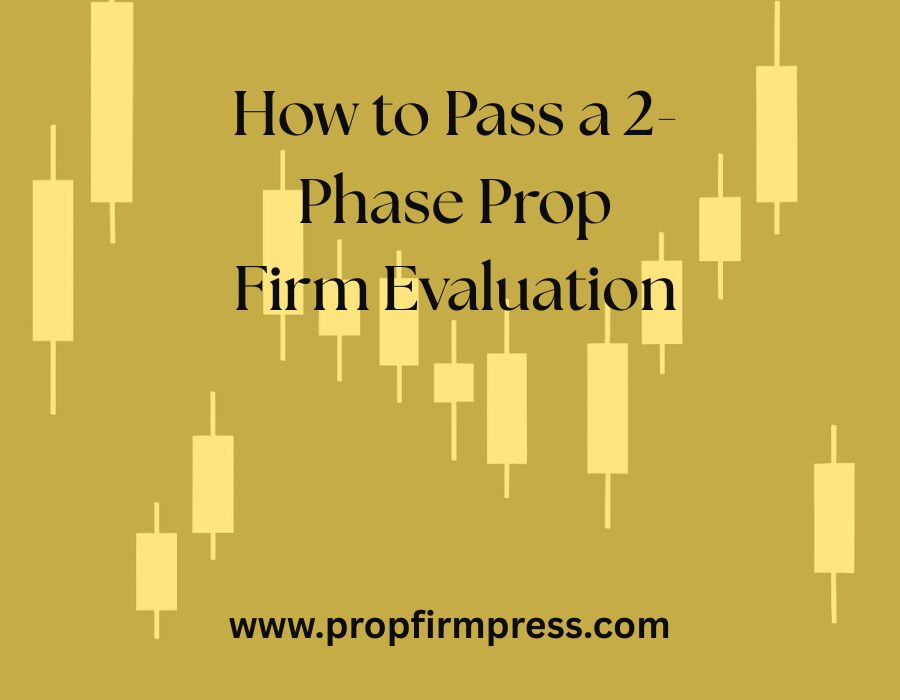What Is a 2-Phase Prop Firm Evaluation?
A two-phase evaluation is a common model used by many leading proprietary trading firms to assess a trader’s skill, consistency, and risk control over time. This format is especially popular among firms like Earn2Trade, The 5%ers, and Funding Ticks. Unlike one-step evaluations that only require hitting a profit target, the two-phase model breaks the process into two distinct parts—each with unique challenges that traders must pass sequentially.
Phase 1: The Profit Target Test
The first phase generally focuses on hitting a specific profit target without violating any rules. For example, you might need to grow a $50,000 account to $55,000 while staying under a 5% drawdown and avoiding daily loss violations. This phase tests your basic strategy and execution under pressure.
- Profit Target: Typically 6% to 10% of account size
- Drawdown Limit: Static or trailing drawdown applies
- Daily Loss: Must not exceed maximum allowed
- Minimum Trading Days: Often 5 to 10
The trick here is to remain consistent and not overtrade in an attempt to hit the profit goal too quickly. Traders often blow this phase by being too aggressive early on.
Phase 2: The Consistency Test
Once you pass Phase 1, you’ll move on to Phase 2. This stage often has a lower profit target but higher expectations of discipline and consistency. Firms are watching to ensure you didn’t just get lucky in Phase 1. Key features usually include:
- Lower Profit Target: Often 4% or less
- No Rule Violations: Same loss limits apply
- Minimum Days: Often more than Phase 1 (e.g., 10 days)
This phase is where many traders get tripped up. Without the adrenaline of a big profit goal, they lose focus and begin overtrading or ignoring rules.
Keys to Passing Phase 1
1. Use a High-Probability Setup
Stick to one or two setups that you’ve backtested and traded live. Avoid trying something new during a challenge. Your goal isn’t experimentation—it’s execution.
2. Trade During the Best Market Sessions
Focus your trades during high-volume sessions like the U.S. market open (9:30–11:30 AM EST). Avoid late afternoons or low-liquidity times that increase slippage and false signals.
3. Size Conservatively
Keep your position size small enough to survive a bad day. It’s better to take 20 trades at half-size than 3 oversized positions that blow your account. Many funded traders recommend risking 0.25% to 0.5% per trade during evaluations.
4. Journal Every Trade
Keep a running log of entries, exits, emotions, and rule adherence. Use tools like the Prop Firm Press Journal Sheets to quickly track your performance.
Keys to Passing Phase 2
1. Reduce Trade Frequency
While Phase 1 may have required some aggressiveness to hit the target, Phase 2 rewards traders who slow down. Limit yourself to 1–2 trades per day unless conditions are exceptionally favorable.
2. Protect Your Profits
If you gain 2% in the first few days of Phase 2, shift to defense. Lower your size, focus on small wins, or even skip days. You’re not trying to prove anything—just finish strong without breaking rules.
3. Simulate Payout Behavior
Approach Phase 2 like you would a funded account. Treat it like your real capital. Many firms like Top One Futures and Instant Funding use Phase 2 to see if you can operate with long-term discipline.
4. Use the “One Loss Rule”
If you take one loss, stop for the day. This keeps you from spiraling into revenge trades that could jeopardize your progress. Protecting your daily stats becomes even more important in Phase 2.
What Happens After You Pass?
Once both phases are passed, the firm may offer:
- Immediate funding with live capital
- A scaling plan to grow your account over time
- Real-time payouts (weekly, bi-weekly, or monthly)
Some firms may require a verification call or ID check before activation. Always read the terms before you begin your evaluation.
What If You Fail One Phase?
Many firms offer resets or discounts for retesting. If you failed Phase 1, review your journal and identify your mistake: Was it position sizing? Rule violation? Overtrading? Fix that before restarting. If you failed Phase 2, it’s often due to emotional inconsistency or trading without a clear edge.
Closing Thoughts
Passing a 2-phase evaluation isn’t about being perfect—it’s about being consistent. Firms aren’t looking for rockstars; they want rule-followers who can make steady profits while respecting capital. If you master that mindset, the funded account will follow.
